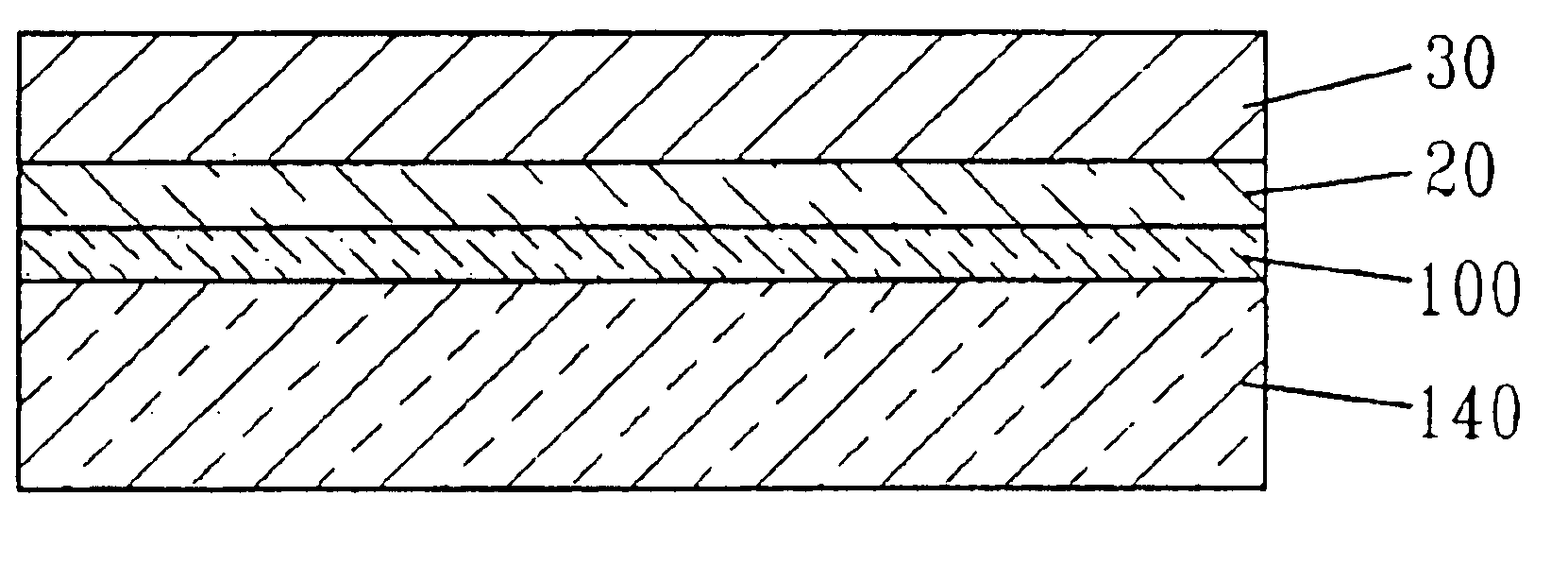Method of fabricating silicon devices on sapphire with wafer bonding at low temperature
a technology of silicon devices and sapphire, applied in the direction of semiconductor devices, basic electric elements, electrical equipment, etc., can solve the problems of reducing device self-heating effect, reducing device performance, and affecting device performan
- Summary
- Abstract
- Description
- Claims
- Application Information
AI Technical Summary
Benefits of technology
Problems solved by technology
Method used
Image
Examples
example
[0050]In this example the inventive process for the transfer of a device layer from the temporary substrate onto a sapphire substrate is described. The integrated circuit layer, or device layer 30, to be transferred was completely fabricated on a silicon-on-insulator substrate 40 where the oxide layer 20, forming the insulator, was SiO2 and the device layer 30 was Si or SiGe.
[0051]The upper surface of the integrated circuit 30 was then bonded to a glass handling substrate 50 using a polymer based adhesive 60. The bulk of the temporary substrate 40 was then removed using wafer grinding. Any remaining portion of the temporary substrate 40 was then etched away by potassium hydroxide (KOH) and tetramethyl-ammonium hydroxide (TMAH), using the oxide layer 20 as an etch stop layer. The exposed oxide surface 120 was then polished using chemical-mechanical polishing (CMP) until the surface rough mean square (RMS) roughness was less than about 0.5 nm. The particulate residue from the CMP was ...
PUM
| Property | Measurement | Unit |
|---|---|---|
| thickness | aaaaa | aaaaa |
| temperature | aaaaa | aaaaa |
| thickness | aaaaa | aaaaa |
Abstract
Description
Claims
Application Information
 Login to View More
Login to View More - R&D
- Intellectual Property
- Life Sciences
- Materials
- Tech Scout
- Unparalleled Data Quality
- Higher Quality Content
- 60% Fewer Hallucinations
Browse by: Latest US Patents, China's latest patents, Technical Efficacy Thesaurus, Application Domain, Technology Topic, Popular Technical Reports.
© 2025 PatSnap. All rights reserved.Legal|Privacy policy|Modern Slavery Act Transparency Statement|Sitemap|About US| Contact US: help@patsnap.com



